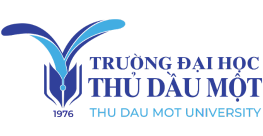References
Batstone, R. (1994). Grammar. Oxford: Oxford University Press.
Bowen, T. & Marks, J. (1994). Inside teaching. London: Macmillan.
Celce-Murcia, M., and S. Hilles. (1988). Techniques and Resources in Teaching Grammar. New York: Oxford University Press.
Chen, Z. (2016). Grammar Learning Strategies Applied to ESP Teaching. Theory and Practicein Language Studies, Vol. 6, No. 3, pp. 617-621, March 2016.
DeKeyser, R., & Sokalski, K. (1996). The differential role of comprehension and production practice. Language Learning, 46, pp.613-642.
DeKeyser, R. (2005). What makes learning second-language grammar difficult? A review ofissues. Language Learning, 55(S1), 1-25.
Ellis, R. (1993). The Study of Second Language Acquisition. Oxford: Oxford University Press.
Ellis, R. (2005). Instructed Second Language Acquisition: A Literature Review. New Zealand: Auckland UniServices Limited.
Ellis, R. (2006b). Modelling learning difficulty and second language proficiency: Thedifferential contributions of implicit and explicit knowledge. Applied Linguistics, 27(3),pp.431-463.
Green, P., & Hecht, K. (1992). Implicit and explicit grammar: An empirical study. AppliedLinguistics, 13(2), pp.168-184.
Harley B., & Hart D. 1997. Language aptitude and second language proficiency in classroom learners of different starting ages. Studies in Second Language Acquisition, 19, 379– 400.
Hedge, T. (2000). Teaching and Learning in the Language Classroom. Oxford: Oxford University Press
Hutchinson, T. & Waters, A. (1987 & 1992). English for specific purposes: A learning centeredapproach. Cambridge: Cambridge University Press.
Thornbury, S. (2004). How to teach grammar. Cambridge, England: Longman
Thornbury, S. (2004). Natural Grammar: The keywords of English and how they work. Oxford: Oxford University Press
Krashen, S. (1987). Principles and practice in second language acquisition. New York: Prentice-Hall International.
Lewis, M., & Hill, J. (1985). Practical techniques for language teaching. Hove, England:Language Teaching Publications.
Le, T. T. H. (2011). Factors influencing grammar learning of in-service students of English at USSH. Ho Chi Minh City: University of Social sciences and Humanities (NationalUniversity of Ho Chi Minh City).
Nguyen, T. H. H. (2008). Teaching English grammar to 10th graders at Nguyen Du specialized school in Dak Lak province - the application of contrastive analysis in grammar teaching.Ho Chi Minh City: University of Social sciences and Humanities (National University ofHo Chi Minh City).
Richards, J.C., Platt, J., and Platt, H. (1992). Dictionary of language teaching and applied linguistics. London: Longman.
Ross, N. J. (2000). Interference and Intervention: Using Translation in the EFL Classroom. Modern English Teacher, 9 (3), pp.61-66.
Rutherford, W. E., & Smith, M. S. (1987). Grammar and second language teaching: A book of readings. Newbury House.























